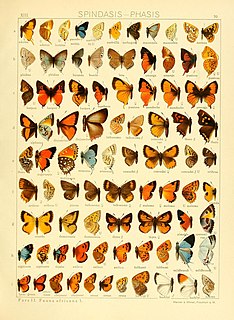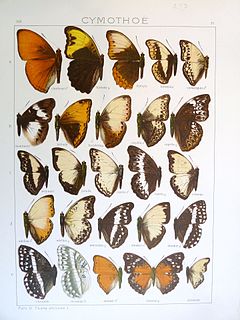
South Africa occupies the southern tip of Africa, its coastline stretching more than 2,850 kilometres from the desert border with Namibia on the Atlantic (western) coast southwards around the tip of Africa and then northeast to the border with Mozambique on the Indian Ocean. The low-lying coastal zone is narrow for much of that distance, soon giving way to a mountainous escarpment that separates the coast from the high inland plateau. In some places, notably the province of KwaZulu-Natal in the east, a greater distance separates the coast from the escarpment. Although most of the country is classified as semi-arid, it has considerable variation in climate as well as topography. The total land area is 1,220,813 km2 (471,359 sq mi). It has the 23rd largest Exclusive Economic Zone of 1,535,538 km2 (592,875 sq mi).

The Drakensberg is the name given to the eastern portion of the Great Escarpment, which encloses the central Southern African plateau. The Great Escarpment reaches its greatest elevation – 2,000 to 3,482 metres within the border region of South Africa and Lesotho.

The Great Escarpment is a major topographical feature in Africa that consists of steep slopes from the high central Southern African plateau downward in the direction of the oceans that surround southern Africa on three sides. While it lies predominantly within the borders of South Africa, in the east it extends northward to form the border between Mozambique and Zimbabwe, continuing on beyond the Zambezi River valley to form the Muchinga Escarpment in eastern Zambia. In the west, it extends northward into Namibia and Angola.
Pseudonympha gaika, the Gaika brown, is a butterfly of the family Nymphalidae. It is found in South Africa in the Eastern Cape, then along the Amathole Mountains, the north-east of the Witteberg and from Lesotho to KwaZulu-Natal near the Drakensberg.
Pseudonympha magoides, the false silver-bottom brown, is a butterfly of the family Nymphalidae. It is found in South Africa, from the Western Cape to the Eastern Cape, along the Drakensberg foothills into Lesotho, KwaZulu-Natal, Swaziland, Mpumalanga, north to the Wolkberg. It is also found in Free State and Gauteng.
Stygionympha scotina, the eastern hillside brown, is a butterfly of the family Nymphalidae. It is found in South Africa on the seaward side of the mountains from Cederberg south to the Cape Peninsula in Western Cape and along the Drakensberg mountains to Grahamstown in Eastern Cape.
Tsitana tsita, the dismal sylph, is a butterfly of the family Hesperiidae. It is found from Winterberg and Amatolas in the eastern Cape along the Drakensberg into Lesotho and KwaZulu-Natal down to sea level from Durban across the midlands to the Tugela, the Orange Free State, the eastern part of the North West Province and Gauteng into the Limpopo Province. It is also present in Zimbabwe. The habitat consists of grassland at altitudes between sea level and 2,600 metres.

Kedestes lenis, the unique ranger, is a butterfly of the family Hesperiidae. It is found in South Africa.

Durbania amakosa, the Amakosa rocksitter, is a butterfly of the family Lycaenidae. It is found in South Africa.

Stugeta bowkeri, the Bowker's sapphire, Bowker's marbled sapphire or Bowker's tailed blue, is a butterfly of the family Lycaenidae. It is found in most of southern Africa.

Capys alphaeus, the protea scarlet or orange-banded protea, is a butterfly of the family Lycaenidae. It is found in South Africa.

Chrysoritis aethon, the Lydenburg opal, is a butterfly of the family Lycaenidae. It is found in South Africa, where it is known from northern KwaZulu-Natal to Mpumalanga, along the Drakensberg escarpment to Mariepskop in Limpopo.

Chrysoritis lycegenes, the Mooi River opal, is a butterfly of the family Lycaenidae. It is found in South Africa, where it is known from northern KwaZulu-Natal to Mpumalanga, along the Drakensberg escarpment to Mariepskop in Limpopo province.

Tarucus sybaris, the dotted blue, is a butterfly of the family Lycaenidae. It is found in southern Africa.

Tarucus thespis, the fynbos blue or vivid blue, is a butterfly of the family Lycaenidae. It is found in South Africa, from the Northern Cape, south to fynbos in the West Cape and east to the Amathole Mountains in the Eastern Cape.
Harpendyreus noquasa, the marsh blue, is a butterfly of the family Lycaenidae. It is found in South Africa, from the KwaZulu-Natal Drakensberg, north along the escarpment to Mpumalanga.
Lepidochrysops variabilis, the variable blue, is a butterfly of the family Lycaenidae. It is found in South Africa, from the Cape Peninsula, inland along the western mountains to southern Namaqualand, along the eastern Drakensberg to the Eastern Cape, KwaZulu-Natal, the Free State, Lesotho, Mpumalanga, the southern Limpopo, then west to the central Limpopo, North West and the hills of Gauteng. It is also found in eastern Zimbabwe.
Lepidochrysops tantalus, the king blue, is a butterfly of the family Lycaenidae. It is found in South Africa, from the Drakensberg foothills in the Eastern Cape to the KwaZulu-Natal midlands, Swaziland, then along the escarpment hills to Mpumalanga and Gauteng. It is also found in Limpopo.
Orachrysops nasutus, the nosy blue, is a butterfly of the family Lycaenidae. It is found in South Africa.

Cymothoe alcimeda, the battling glider, is a butterfly of the family Nymphalidae. It is found in South Africa and Zimbabwe.










